

KENNESAW, Ga. | Oct 16, 2023
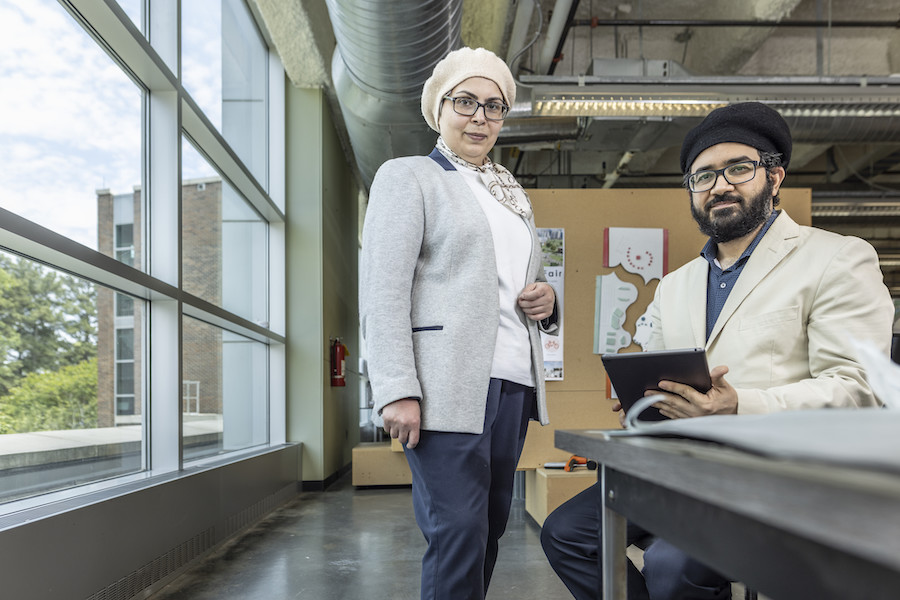
Ali Keyvanfar, an assistant professor of construction management, and Arezou Shafaghat, a limited-term assistant professor in architecture, had never set foot into the world of early childhood education prior to 2020. But for them, like families everywhere, the coronavirus pandemic changed everything.
Being quarantined at home with a young child struggling through an online pre-kindergarten program, the couple knew their son would benefit from an occasional change of scenery. However, taking him outdoors in public gathering spaces near their home to change the educational environment proved equally frustrating. The needs of children to learn through play and exploration weren’t being served in the design of those outdoor settings.
That’s how the Children-Oriented Urban Design Plaza (COUP) Toolkit was born. The couple see their invention as a revolutionary way to overhaul urban outdoor gathering spaces – called urban plazas – to be more educationally sound and inclusive to all levels of childhood development.
The creation of urban plazas is increasing and are often found near transit stations, high-rise office and residential buildings, and “town square” gathering places in large mixed-use developments. Some of the attractions found in them are murals, sculptures, fountains, wading pools and performing arts spaces. Some even have play structures, such as the seasonal Musical Swings that appear each spring in a streetside plaza in Montreal. People of all ages play on the swings, which create piano notes as they are used.
Keyvanfar said most children living in urban locations are likely to spend more time at home and within other indoor environments than those who live in less densely populated areas. As more urban spaces are being built, they are often not being designed with children in mind. He said open urban spaces are critical to positively affect the development of creativity in children, as well as their physical, social, emotional, and cognitive skills. By playing in such areas, children meet others their age and learn valuable social lessons like sharing, taking turns, self-control and tolerance of others.
“We knew we needed to find a solution to support children and be the parents’ voice in design of these spaces, particularly parents of children with special needs like us,” Shafaghat said.
The COUP Toolkit is a patent-pending software program that has 14 features for designing urban plazas and playgrounds to be proper learning environments for children. It is intended to be used from the early phases of design but can also inform needed changes during construction and to revamp completed spaces.
Keyvanfar and Shafaghat said urban plazas need to focus on families, workers, tourists, and children. They should be accessible by private vehicles or public transportation. Ideally, they would have a variety of zones for children of different ages and offer both active and passive activities. They should also include activities for children with different stimulus tolerances pertaining to noise and sound.
“Some children with sensory processing disorders may benefit from quiet, secluded areas, while others may require more stimulating environments,” said Shafaghat. “Urban planners and designers need to incorporate different textures, sounds, and colors to create sensory-rich environments that meet the needs of all special-needs children.”
Keyvanfar and Shafaghat are especially attuned to the needs of children on the autism spectrum.
“Our son, like other autistic children, has different needs than others. There are many misunderstandings about norms and values so they may run around or shout,” Keyvanfar said. “The quality of the play environment needs to be different and inclusive for them, also.”
With degrees in civil engineering and construction management, Keyvanfar said he initially felt a little out of his element working in the education arena. However, he knew he could use his expertise in decision making – a skill required daily in construction management.
The Kennesaw State professors are now working with Georgia transportation authorities to implement the toolkit in future designs of interstate rest areas and other transportation-adjacent public use spaces throughout the state of Georgia.
The research and design done by Keyvanfar and Shafaghat was chosen for the Editor’s Choice Collection in the ASCE Journal of Urban Planning and Development.
“Getting published alone in the ASCE Journal is a career achievement,” Keyvanfar said. “Having our work chosen as Editor’s Choice is a lifetime achievement.”
However, the couple says their pride in being published is the second-best feeling around this project.
“Our true joy will come in seeing a child in an environment that was inspired by our toolkit,” said Keyvanfar. “That will give us the feeling that we made our mark and did something positive in this universe.”
– By Amanda Cook
Photos by Darnell Wilburn
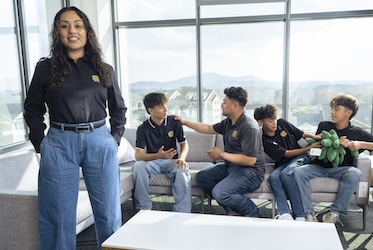
Kennesaw State graduate builds a future few expected
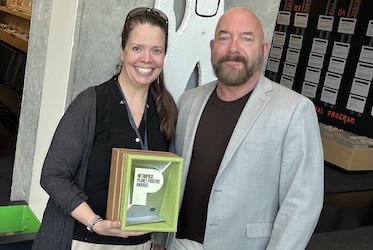
Assistant professor wins Metropolis Magazine Planet Positive Award for sustainability
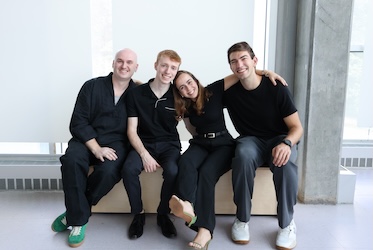
Kennesaw State architecture students earn recognition in international design competition
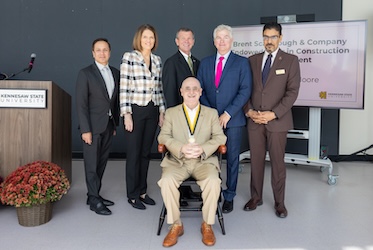
Kennesaw State's Brian Moore installed as Brent Scarbrough and Company Endowed Chair in Construction Management
A leader in innovative teaching and learning, Kennesaw State University offers undergraduate, graduate, and doctoral degrees to its more than 51,000 students. Kennesaw State is a member of the University System of Georgia with 11 academic colleges. The university's vibrant campus culture, diverse population, strong global ties, and entrepreneurial spirit draw students from throughout the country and the world. Kennesaw State is a Carnegie-designated doctoral research institution (R2), placing it among an elite group of only 8 percent of U.S. colleges and universities with an R1 or R2 status. For more information, visit kennesaw.edu.